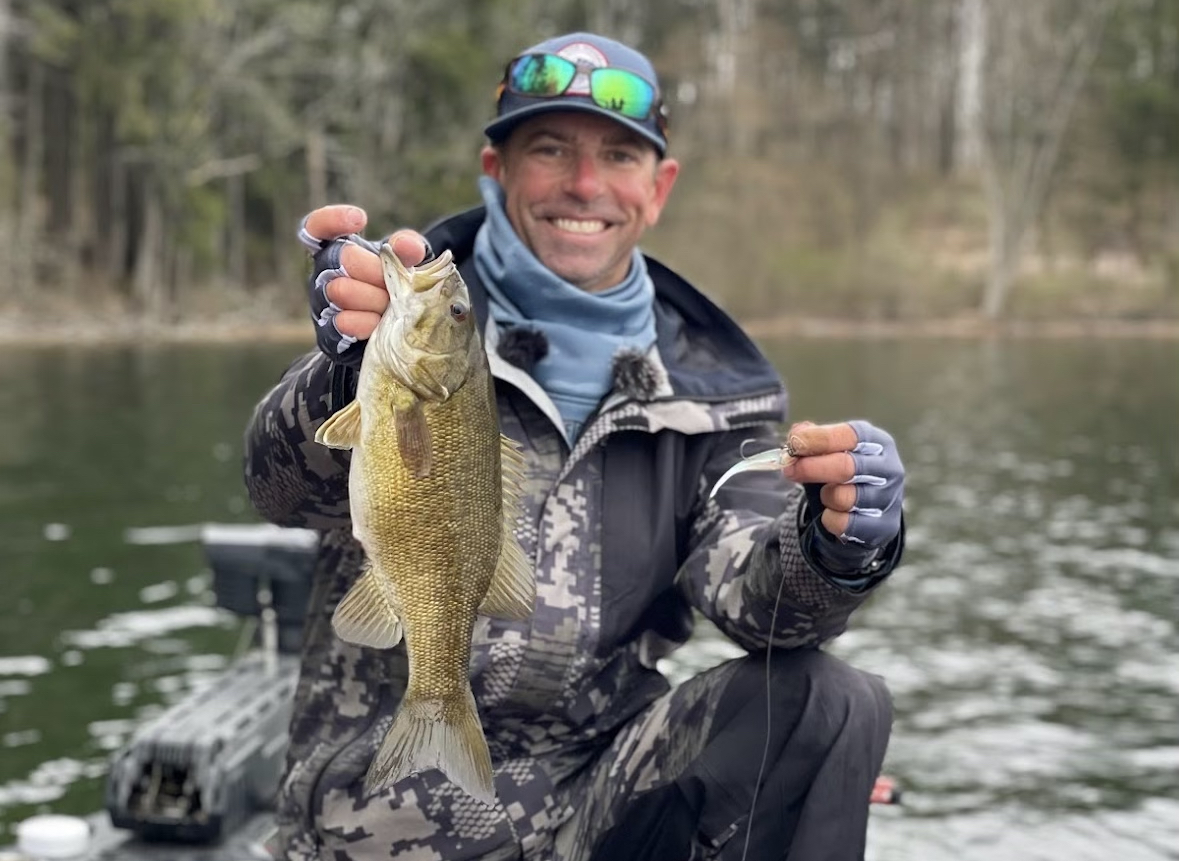
I’m always blown away by all the innovative baits introduced at ICAST every year. The 2023 show was no different. One bait I’m especially excited about is a lure I helped develop with Berkley. It’s called the PowerBait Power Switch.
I’ll be switching to this bait a lot over the next three Bassmaster Elite Series tournaments. And, it will be a deep-water killer just about anywhere now that midsummer is here.
The Switch was designed with forward-facing sonar in mind. Whatever you think of forward-facing sonar, this technology is changing the way we fish.
Many lures don’t show up well on a forward-facing graph’s display, which makes it hard to tell where they are in relation to whatever fish you’re seeing. The Switch fixes this problem.
The weight and hook are molded into the Switch’s soft plastic baitfish body. Because the weight is wide, it bounces a strong sonar return back to your graph. This makes the Switch show up more distinctly on a graph’s display.
The Switch comes in six sizes, from 1.75 to 5 inches in length that weigh 3/16 to 1 5/8 ounces. Half of the models have a Mylar strip molded into them, which also amplifies the sonar return.
Fast sink rate
The Switch is heavy for its size, so it sinks quickly. That’s critical when utilizing forward-facing sonar.
Say you’re scanning at 70 feet and see a suspended bass. The fish is likely to move before a slow falling bait gets down to it. A Switch sinks faster and improves your odds of enticing a bite.
The 90-degree line tie in the Fusion 19 hook sticks out well back in the head of the Switch. This gives the bait the natural horizontal posture of a swimming baitfish. It comes in an excellent selection of colors that mimic a variety of baitfish.
Switch hitting
It’s called the Switch because you can work it with a variety of different actions on the same cast. That’s important because you often have only one opportunity to make a bass that you see on forward-facing sonar bite.
First, the Switch has a very erratic darting motion. It never falls the same way twice when you jig it. If you’ve ever used a Rapala Jigging Rap while ice fishing, it’s a lot like that.
Another great thing is that the Switch falls tight and never leaves the strike zone. You don’t want a lure that rushes away from the bass when you jig it.
If the bass doesn’t commit to jigging, I can try stroking the Switch with higher lifts. That gives it a way more erratic action and fall. A lot of times that triggers a bite.
Sometimes a more subtle action does the trick. When you wind the Switch in with a straight, steady retrieve, its little tail shimmies. It doesn’t have the wide wag that bass have seen a zillion times.
You can also kill the Switch and let it sit motionless. Some people call this tight lining. Elite pro Jeff “Gussy” Gustafson calls it moping. It’s a lot like ice fishing. When you slowly raise the bait up the bass rises with it.
A rod rigged with a Switch will be on my boat’s deck at all three of the remaining Elite Series tournaments this season. The first stop is at Lake St. Clair. Next is Lake Champlain. We finish the series at the St. Lawrence River.
I’ll be using Lowrance’s ActiveTarget forward-facing sonar at all three events to pick off heavyweight smallmouth. I know the Switch is devastating on smallies because I had opportunities to fish for the brown ones while experimenting with prototypes of this bait.
I’ll be fishing mainly the 3/8- and 1/2-ounce sizes. The cool thing about the Switch is that it’s small for its weight. The 3/8-ouncer is a hair over 3 inches and the 1/2-ounce is a hair under 4 inches.
They are the perfect size to imitate immature yellow perch, goby, herring and smelt. With the Switch I can place these realistic baits where the smallmouth are and impart whatever action it takes to make them bite.
You can learn more about how I fish the Switch and other baits at www.mikeiaconelli.com or www.youtube.com/c/goingike.





